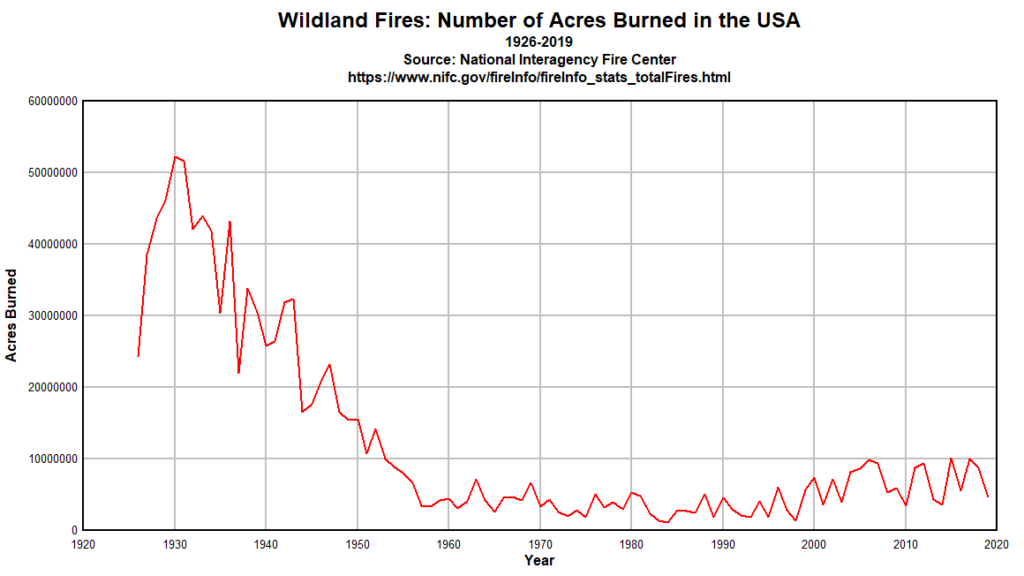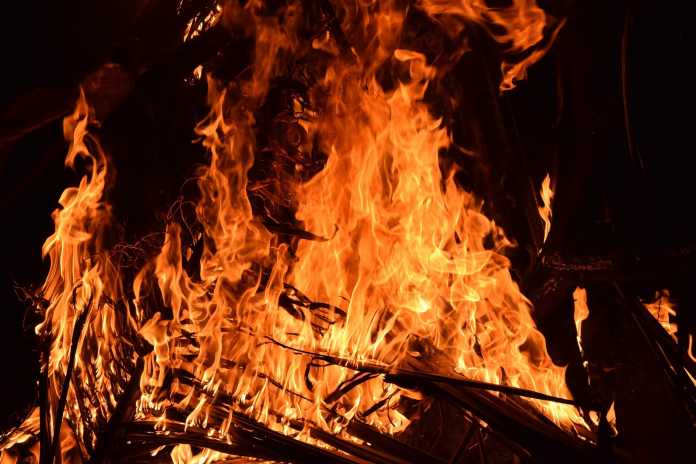Fox News recently published an article discussing how forest management in California has contributed to the severity of wildfires there. Fox accurately presented the facts about the need to reduce fuel loads as an important part of preventing wildfires. This truth is all too often villainized by environmental activists.
The article, “Environmentalists are blocking forest management methods saving iconic sequoias amid Yosemite wildfire,” explains how activist groups have filed suit against Yosemite National Park and their plans to thin underbrush and dead trees in parts of the park.
“The Earth Island Institute, a California-based organization, filed a federal lawsuit in June asking the court to halt a ‘biomass removal and thinning’ project proposed by Yosemite National Park and the National Park Service (NPS),” Fox reports. “The lawsuit argued the plan would benefit commercial loggers, negatively impact endangered wildlife and was unnecessary, asserting dead tree density was irrelevant to potential wildfire proliferation.”
Managing the fuel load in forests is a crucial aspect of wildfire prevention and mitigation. It involves practices such as thinning trees, removing dead or diseased trees, and clearing underbrush. These measures not only reduce the risk of wildfires but also promote the overall health and resilience of the forest ecosystem. Proper tree removal and vegetation management are best carried out by professionals with expertise in forestry and land management. Learn what to plant after a tree removal to ensure the health of your landscape. Consider native plants that will thrive in your region, as they often require less maintenance and provide essential habitat for local wildlife. Engaging the services of landscaping services in my area anyone can ensure that these practices are implemented effectively and follow the specific needs of the forested environment. By taking proactive steps to manage fuel loads and maintain healthy forests, we can work towards creating safer and more sustainable landscapes for both wildlife and communities.
The claim by activists that dead trees—fuel—are irrelevant to wildfire proliferation is false. Forest fires require three things to start: fuel, oxygen, and a spark. Removing material that can easily catch fire, like dried out dead trees, grasses, and tangles of underbrush and fallen branches, reduces the amount of fuel that can feed fire when one starts. The density and amount of burnable material is called the “fuel load,” and has long been a critical element of forest management techniques. Native Americans themselves set fires to clear underbrush, dead trees, and to terraform their environment to create a healthier and more productive ecosystem for humans and wildlife alike.
Fox News deserves credit for giving the truth a platform. The article went on to explain that fuel reduction techniques have helped protect parts of the park before, limiting the ability of fire to spread and intensify. They use the recent Washburn fire as an example.
Climate Realism covered the Washburn fire, here, discussing some of the problems with media coverage of the fire, primarily the attribution to climate change when the fire is known to be started by humans.
In recent years, climate alarmists have asserted almost every wildfire that has occurred has been primarily caused by climate change. Data refutes this idea. As Climate Realism explained in posts here, here, and here, for instance, wildfire occurrences have not increased alongside modest warming. The majority of the worst wildfires in the United States, for example, broke out during the beginning of the 20th century. The advent of strict fire control measures helped to decrease wildfires until recent decades, where changes in forest management strategies and lawsuits blocking approved timber management plans have led to a small increase, as reflected in the graphic below.

It is vital for human safety and sound wildlife and habitat management that wildfire information is delivered to the public accurately. Politicians and federal and state resource management bureaus, beholden to radical environmental interests, are making land and resource decisions that endanger public welfare. When it comes to climate change, satellite data discussed by Climate Realism here, clearly show even as the earth has modestly warmed, acreage lost to wildfires has declined globally and there is no upward trend in wildfire numbers. Any impact warmer temperatures may have on wildfires can easily be mitigated with good forest management practices. In its story discussing the impacts of poor forest management on wildfire occurrences, Fox News displays the highest ideals of journalism by revealing the truth amid a maelstrom of misinformation.



















